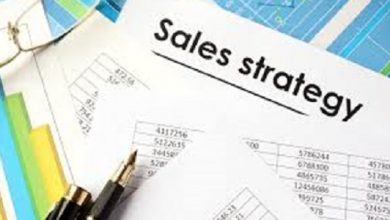What are current assets List with examples
Current assets refers to all assets that can easily come into effect within a maximum of one year from the date shown at the top of the general balance. They are used in the normal operating cycle of a company.
This cycle is the time it takes to buy or produce inventory, sell finished goods, and collect cash for the sale, usually representing a year.
Money is needed to finance operations. If new equipment is needed for the business or a larger office space, it will be necessary to raise funds to pay for these investments. Funding can come from a loan, an investor, a business line of credit, or it can be paid in cash.
Cash and short-term assets that can be quickly converted into cash are also called current or liquid assets. Therefore, when an asset is liquid, it means that it can be converted into cash in a short period of time.
List of current assets
Current assets are at the top of the company’s balance sheet and are stated in order of liquidity.
– Money
It is the most liquid asset of a company. Therefore, it is very significant to maintain the short-term solvency of an entity. The amount shown in this current asset is the amount the company has available.
The money can be used to quickly cover daily expenses. This account typically includes cash, currency, bank funds, checks, and money orders.
– cash equivalent
They are the result of cash invested by companies in financial instruments that earn interest in the short term. These instruments are highly liquid, safe and easily convertible into cash, usually within the next 90 days.
These securities include treasury bills, commercial paper and money market funds. They are easily traded in the market and the value of these products can also be easily determined.
– negotiable values
These are short-term investments made by the company. These investments are easily tradable and must be converted into cash within a year at the most. These include treasury bills, promissory notes, bonds and also equity securities.
These amounts are recorded at cost plus brokerage fees after purchase. The price of these securities can change rapidly, reflecting any change in their value on the company’s income statement.
– Accounts receivable
These are the amounts that customers owe for products and services provided on credit by a company. These amounts are determined after taking into account bad debt expenses.
The increase in bad debt expenses will lead to an increase in the provision for bad debts. Therefore, the net realizable value of accounts receivable must be calculated, which is the difference between the gross accounts receivable and the allowance for doubtful accounts.
– The inventories
Raw material
They consist of the stored materials to be consumed to manufacture the products that will eventually be sold.
Products in process
They refer to goods that are in the process of being manufactured and have not yet been completed for sale.
finished products
They refer to items that have been completed and are waiting to be sold in the normal course of business.
– Prepaid expenses
They refer to a company’s operating expenses that have been prepaid. Cash on the balance sheet is reduced at the time these expenses are paid at the beginning of the accounting period.
Simultaneously, a current asset with the same value is created on the balance sheet under the name of prepaid expenses. Examples of prepaid expenses are prepaid rent, prepaid insurance, etc.
– Other current assets
They include deferred assets. These assets are created when the tax payable exceeds the amount of “income tax expense” recognized by the company in its income statement.
Examples of current assets
– Wal-Mart
The following representation of Wal-Mart’s balance sheet at the end of fiscal 2015 can be considered:
Current assets are clearly separated and listed in order of liquidity. Cash is obviously the most liquid asset, and accounts receivable represent money that the company has already raised but not yet received.
Inventory is less liquid because it represents assets that can take time to turn into cash.
– Nestlé India
Cash and cash equivalents
Cash and equivalents totaled Rs 15,988 million at the end of 2018. The company’s operating cycle for dividing assets into current and non-current is one year. This is based on the nature of the products produced by Nestlé.
The notes to the financial statements describe which items are included in cash and cash equivalents:
– Bank overdrafts.
– bank balances.
– Demand deposits maturing in 3 months.
– Verifications.
short term investments
In the case of Nestlé, they totaled Rs 19,251 million by the end of 2018. Nestlé controls its current assets to eliminate liquidity risk, thus ensuring that it has sufficient liquidity to meet its operational needs.
This investment is enough to meet your business requirements within a desired time frame.
accounts receivable
These accounts totaled R$1,246 million on Nestlé’s balance sheet at the end of 2018. The company takes the following approach to calculate accounts receivable:
The expected credit loss on accounts receivable is based on the probability of default during the useful life of these accounts. The allocation is determined after considering:
– The customer‘s credit profile.
– commercial channels.
– The default experience.
the inventories
Nestlé inventories at net realizable value. However, items such as raw materials, packaging material and other supplies are not recorded below cost. The methods used to determine the cost of inventories are as follows:
– Raw material and packaging material: first in, first out (FIFO).
– Products purchased for resale: Weighted average.
– Work in process and finished products: cost of material + percentage share of general production expenses.
prepaid expenses
According to the notes to the financial statements in Nestlé’s annual report, they form part of the “Other current assets” account. Prepaid expenses at the end of 2018 amounted to Rs 77 million.




